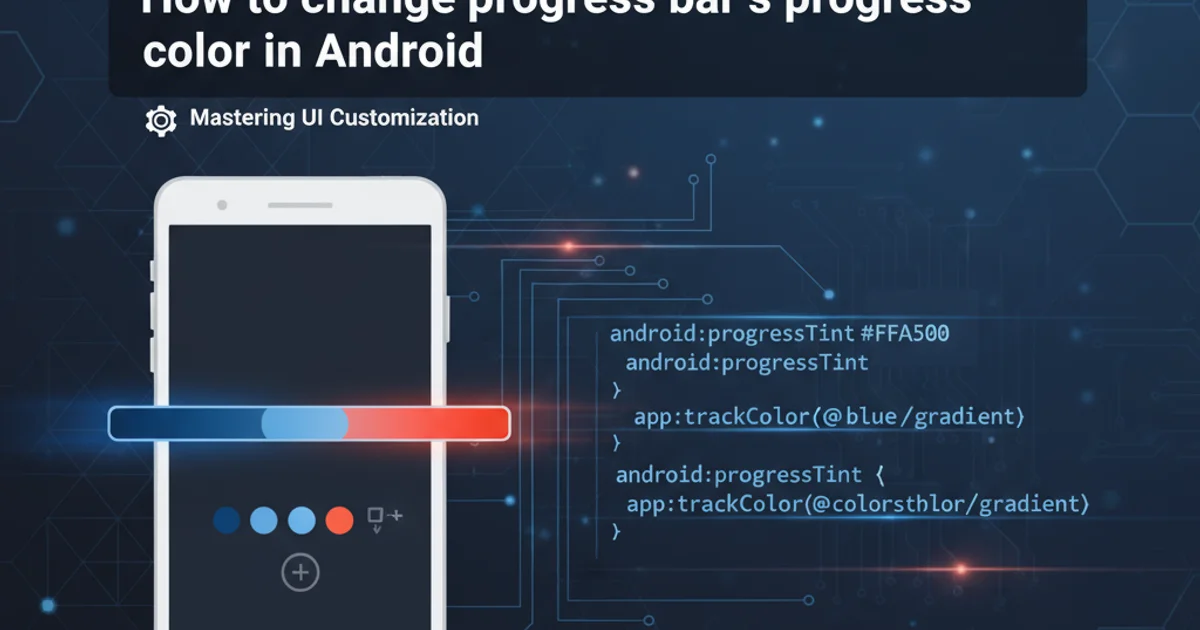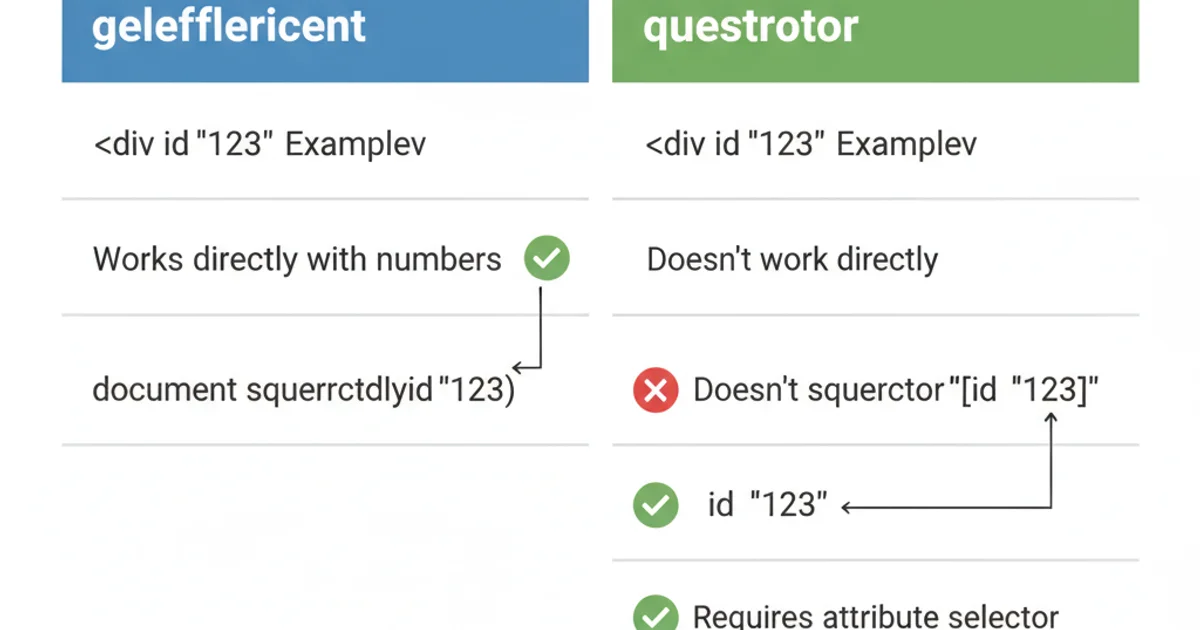Using querySelector with IDs that are numbers
Categories:
Using querySelector with IDs that are Numbers

Learn how to correctly select HTML elements using querySelector when their IDs consist solely of numeric characters, avoiding common pitfalls and ensuring robust JavaScript interactions.
The querySelector method is a powerful tool in JavaScript for selecting elements from the DOM using CSS selectors. While it's generally straightforward, a common challenge arises when dealing with HTML elements whose id attributes are composed entirely of numbers. This scenario can lead to unexpected behavior or selection failures if not handled correctly, as CSS selectors have specific rules regarding identifiers. This article will guide you through the proper techniques to select numeric IDs using querySelector.
Understanding CSS ID Selector Rules
In CSS, an ID selector is denoted by a hash symbol (#) followed by the ID value. For example, #myElement selects an element with id="myElement". However, CSS specifications (specifically CSS2.1 and earlier) had stricter rules for identifiers. An ID could not start with a digit, a hyphen followed by a digit, or a hyphen followed by a non-digit and then a digit. While modern CSS (CSS3 and HTML5) is more lenient, allowing IDs to start with numbers, querySelector adheres to the stricter CSS selector syntax for compatibility and consistency. This means that an ID like id="123" is not a valid CSS identifier on its own when used directly with querySelector.
flowchart TD
A[HTML Element with ID] --> B{Is ID purely numeric?}
B -- Yes --> C{Direct `querySelector`?}
C -- No --> D[Use CSS.escape()]
C -- Yes --> E[Selection Fails/Incorrect]
B -- No --> F[Direct `querySelector` works]
D --> G[Successful Selection]
F --> GDecision flow for selecting elements with numeric IDs.
The Solution: Using CSS.escape()
The most robust and recommended way to handle IDs that are numbers (or contain special characters) when using querySelector is to escape the ID string. The CSS.escape() static method is specifically designed for this purpose. It takes a string as input and returns a new string with characters that are not valid in CSS identifiers escaped. This ensures that the resulting selector string is always valid, regardless of the characters in the original ID.
<!DOCTYPE html>
<html lang="en">
<head>
<meta charset="UTF-8">
<meta name="viewport" content="width=device-width, initial-scale=1.0">
<title>Numeric ID Example</title>
</head>
<body>
<div id="123">This div has a numeric ID.</div>
<div id="456-abc">This div has a mixed ID.</div>
<script>
// JavaScript will go here
</script>
</body>
</html>
Example HTML structure with numeric and mixed IDs.
// Incorrect approach (will not work for numeric IDs)
// const element1 = document.querySelector('#123');
// console.log('Incorrect selection:', element1);
// Correct approach using CSS.escape()
const numericId = '123';
const escapedNumericId = CSS.escape(numericId);
const element1 = document.querySelector(`#${escapedNumericId}`);
console.log('Correct selection for numeric ID:', element1);
const mixedId = '456-abc';
const escapedMixedId = CSS.escape(mixedId);
const element2 = document.querySelector(`#${escapedMixedId}`);
console.log('Correct selection for mixed ID:', element2);
Demonstrating CSS.escape() for numeric and mixed IDs.
CSS.escape() when constructing selectors from dynamic or user-provided strings, especially for IDs, to prevent unexpected behavior and potential security vulnerabilities like CSS injection.Why Not Just Use getElementById()?
While document.getElementById() is a perfectly valid and often more performant method for selecting elements by ID, it has a key difference: it only accepts the raw ID string and does not use CSS selector syntax. This means getElementById('123') works directly without any escaping. So, why bother with querySelector and CSS.escape()?
querySelector offers greater flexibility. It can select elements based on any valid CSS selector, not just IDs. If your selection logic might involve more complex criteria (e.g., div#123.active), or if you're building a utility function that accepts a generic selector string, querySelector is the more versatile choice. When you're specifically targeting an ID, getElementById() is often simpler and faster, but understanding CSS.escape() is crucial for scenarios where querySelector is necessary or preferred.

Comparison of getElementById vs. querySelector for numeric IDs.
1. Identify the Numeric ID
Locate the HTML element with the ID that consists solely of numbers (e.g., <div id="789">).
2. Escape the ID String
In your JavaScript, use CSS.escape() to properly format the numeric ID. For example, const escapedId = CSS.escape('789');.
3. Construct the Selector
Prepend the escaped ID with a hash (#) to form a valid CSS ID selector string: `#${escapedId}`.
4. Use querySelector
Pass the constructed selector string to document.querySelector(): document.querySelector(#${escapedId});.